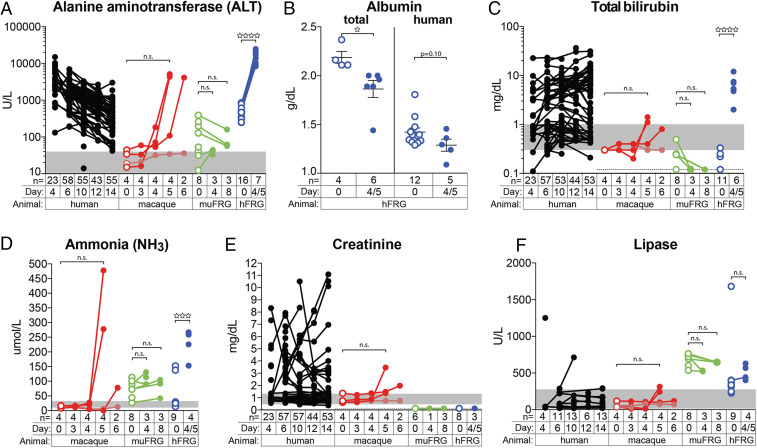Fig. 4.
YFV infection is associated with laboratory abnormalities indicative of severe hepatic injury in humans, macaques, and hFRG mice, but not muFRG mice. Clinical laboratory testing of blood from humans (black), macaques (red), muFRG mice (green), and hFRG mice (blue) was performed to assess end-organ damage for liver [ALT (A), albumin (B), total bilirubin (C), NH3 (D)], kidney (creatinine) (E), and pancreas (lipase) (F). Human data are shown for comparison; “day” indicates “day post inoculation” for animal models, but for humans “day” indicates “day post hospitalization.” Open circles denote preinfection values in animal models and samples from the same individual are connected by a line. Statistical significance was determined from unpaired t tests and is denoted by an open star (n.s.: P ≥ 0.05; ☆: P = 0.01 to 0.05; ☆☆☆: P = 0.0001 to 0.001; ☆☆☆☆: P < 0.0001). Gray areas indicate the human reference range for each parameter, as defined by the American Board of Internal Medicine (67).

